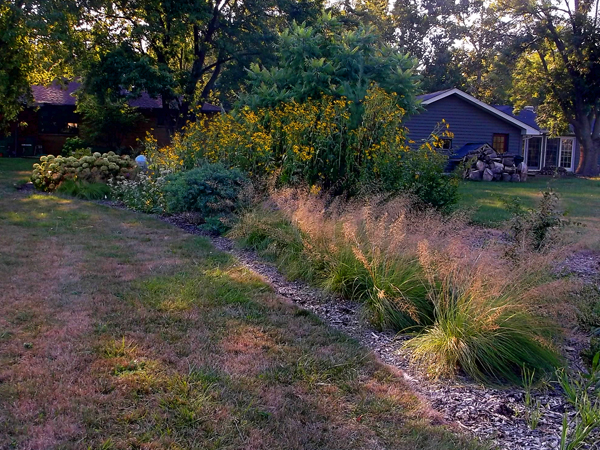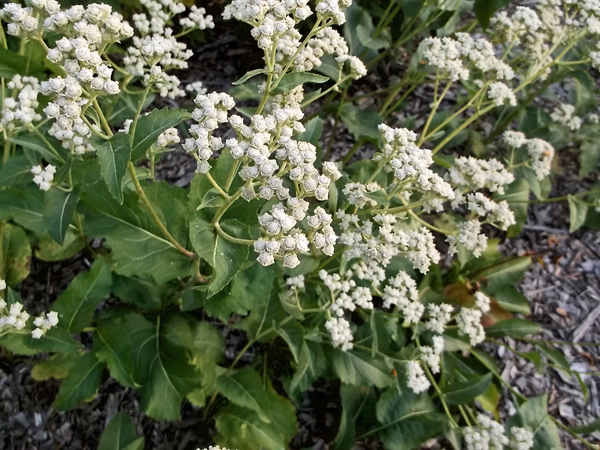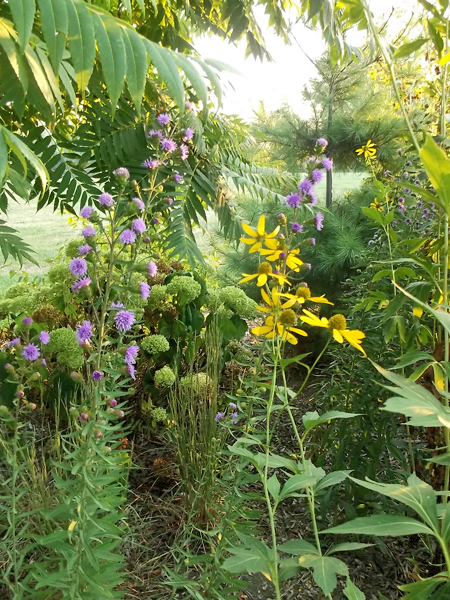Every day that I walk around my yard or simply look out of a window, I see something that brings a smile to my face. Just today, I stood still, as I watched a hummingbird sip the last bits of nectar from an Anise Hyssop (Agastache foeniculum) growing in the herb garden, just off my patio. The Monarch butterflies have been busy also, but they seem to prefer the late blooming Savanna Blazingstar (Liatris scariosa). And the Soldier Beetles seem to swarm just about everything.
One corner of my yard has particularly caught my eye the past few weeks. This garden did not exist just three years ago, but began when I found a seedling Staghorn Sumac (Rhus typhina)growing in my shade garden – I moved it to where it would get more sun and have room to grow – three years later, it’s at least 15 feet tall and its produced it first clusters of deep red seed heads this year – especially interesting in the winter garden.
While the Sumac is dramatic, especially in fall, with leaves that turn shades of red, orange, and yellow, the other plants in this garden certainly hold their own, as well. The Prairie Dropseed (Sporobolis heterolepis) along the front edge of the garden starts to send up their seed heads in August, and can be quite dramatic as they catch the light of the setting sun or the dew of a cool autumn morning. A showy grass from spring until early winter, Prairie Dropseed only asks to be cut back in late winter, just before new growth appears in spring.
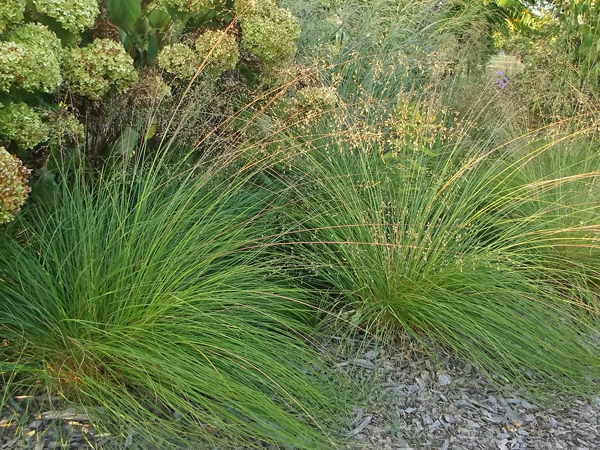
The low stature, soft texture, easy nature of Prairie Dropseed make it a great transition plant for the front of the landscape bed.
The ‘Annabelle’ Hydrangeas got a bit burned in the drought, but still look fine as their green flower heads start to turn a golden straw color as summer turns to autumn. These seed heads hold fast, and give the winter garden much needed interest.
The 7 foot tall plants covered in golden yellow flowers are Golden Glow (Rudbeckia laciniata), a late season bloomer, most loved by the non-migrating Goldfinches as they produce oil rich seed late into the season. While Golden Glow can be found growing along sunny streamsides, it does quite well in the average garden. In fact, since its tendency is to spread by underground runners, drier soil helps to keep them in bounds. The Silphiums, such as Prairie Dock and Cup-plant are also tall late season bloomers, but as mentioned in an earlier post, in a garden setting their tall flower stalks tend to flop over, Golden Glow does not flop, in fact the stems stay upright throughout winter and look quite interesting as the seed head remnants wear caps of winter snow.
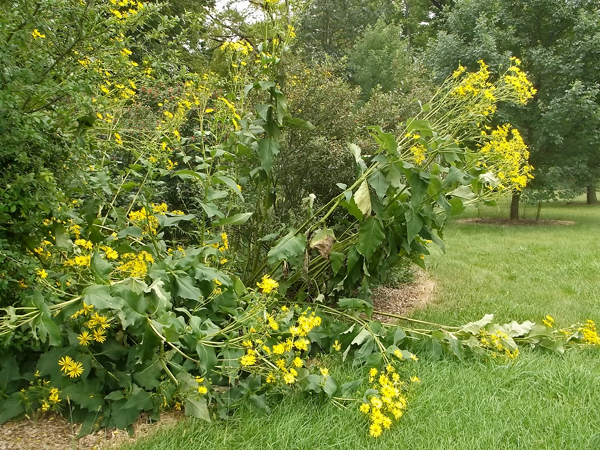
Cup-plant (Silphium perfoliatum) can flop over with it exuberant growth in a garden setting – Golden Glow would have been a better choice here (as seen at the Morton Arboretum)
The big bold leaves of Wild Quinine (Parthenium integrifolium) form a basal rosette from which the flower stems emerge in mid-summer. And, while it is actually past its bloom period, its waxy seed heads still appear showy late into the growing season, slowly turning turning a gray brown on top of stems that stay upright straight through winter, creating beautiful silhouettes against the fresh fallen snow.
I came across a new plant to try out this year, when I attended a native plant sale, held by the Will County Forest Preserve. Blue Mistflower (Eupatorium coelestinum) is not native to my northern Illinois region, but can be found growing along streamsides, in both sun and part shade as far south as Texas. It’s been blooming in my garden since June, but has really started to put on color now, in September. The Missouri Botanical Garden considers it a bit of an aggressive spreader – but in the well drained soil that I have it growing in, rather than its preferred moist soil, I am optimistic that it will not be a problem plant – an in fact with those late season blue flowers on two foot tall plants, I am hoping it does spread – a bit.

This late season bloomer looks fantastic – even with the drought. This plant is growing in morning sun, which may help explain its happy attitude.
As mentioned earlier, the Monarch butterflies have been going nuts over the last of the blazingstars to bloom, the Savanna Blazingstar (Liatris scariosa). As its name indicates, this flower can be found growing with oaks in its native surroundings – and it does, in fact, do quite well with limited sun – unlike most other blazing stars which prefer full sun. Shown here, growing amongst a gray leaved Switchgrass (Panicum virgatum). The flowering stems of the three foot tall blazingstars combine well with the four foot tall Switchgrass, seeming to float just below the airy seed heads of the grass.
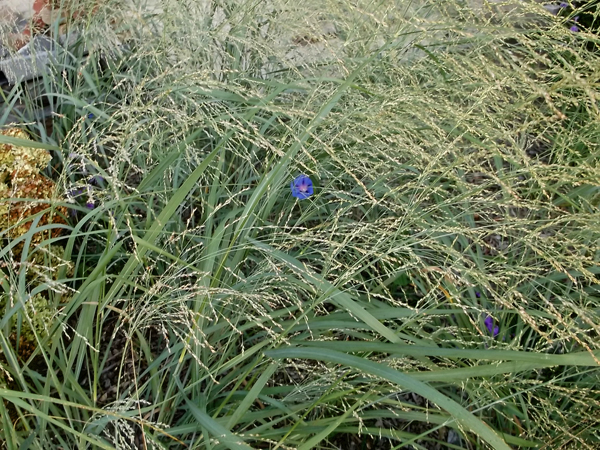
A few morning glories reseed themselves every year in this garden, climbing over the hydrangeas and the the grasses, they create bright pops of color throughout.
With a bit a planning, and some experimentation of plant combinations, the late summer garden can be truly stunning, full of color and drama.

